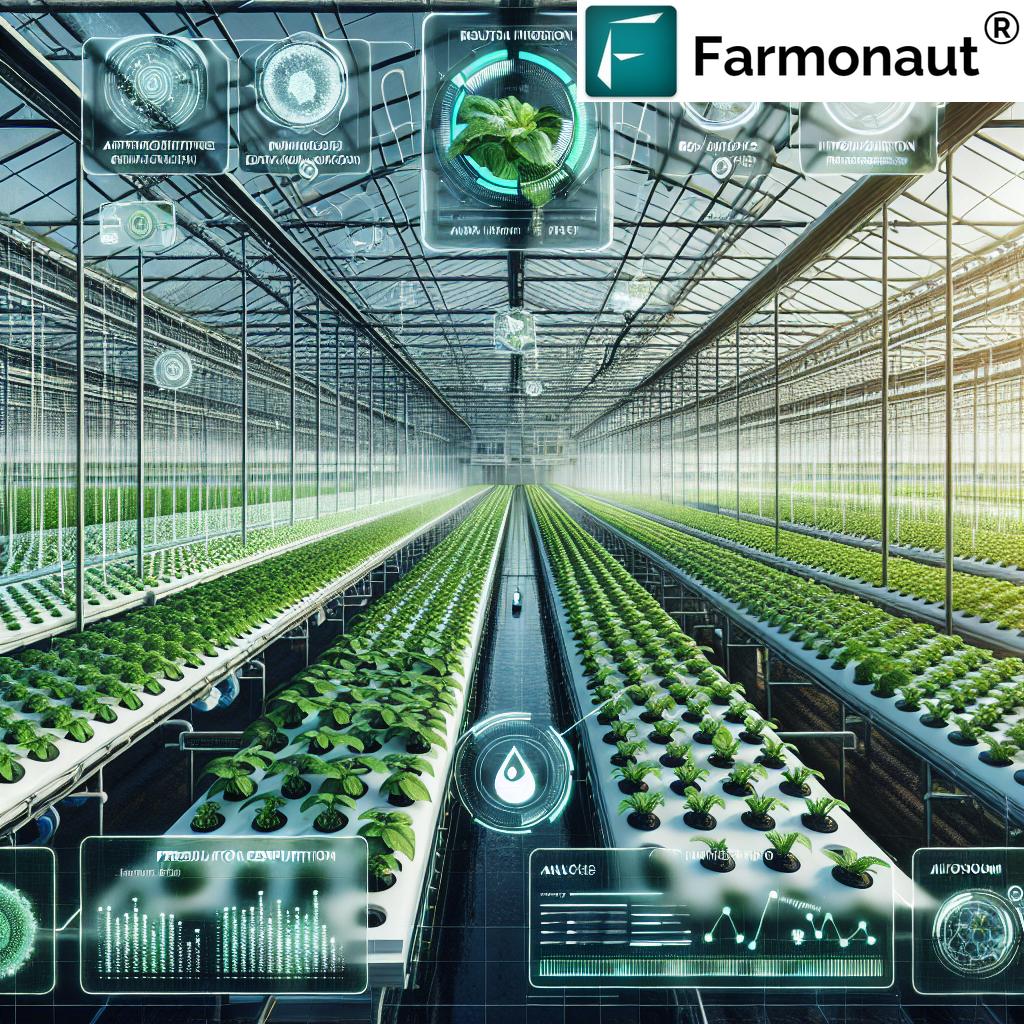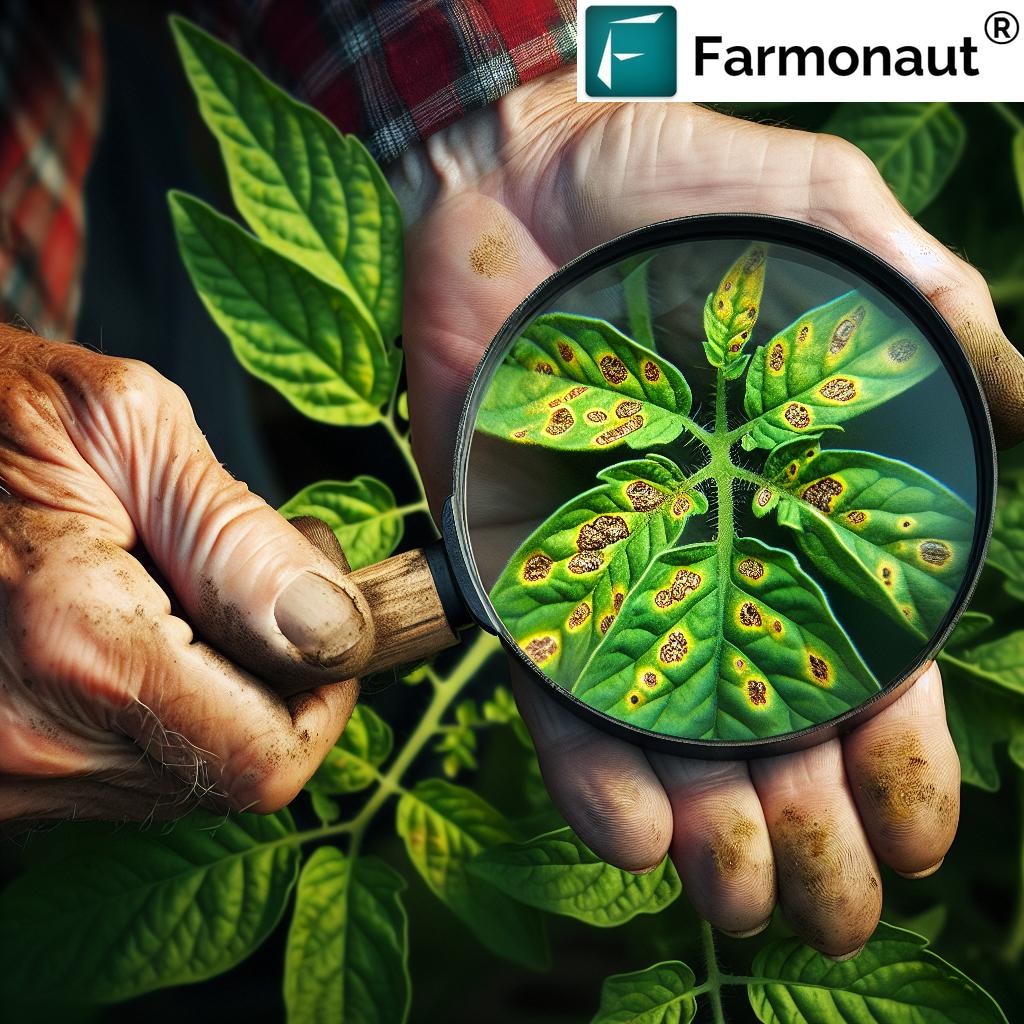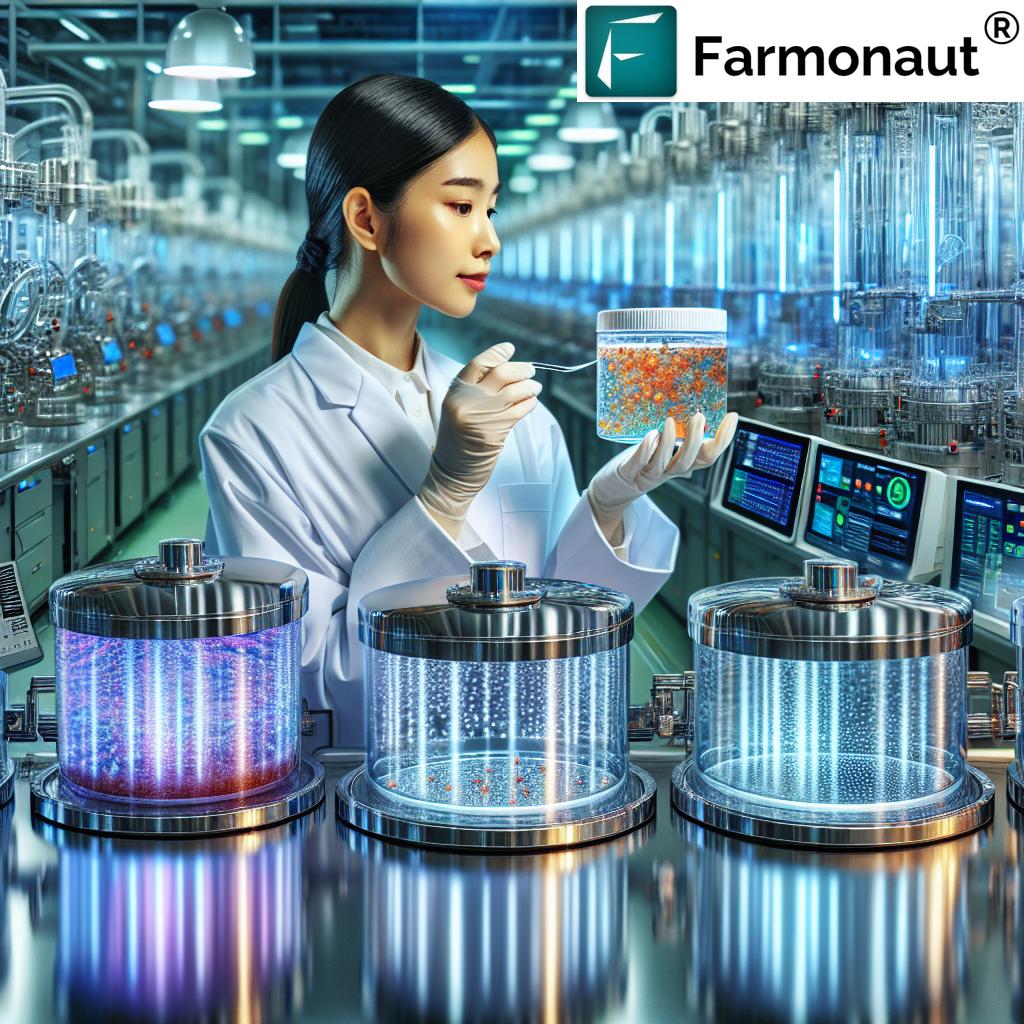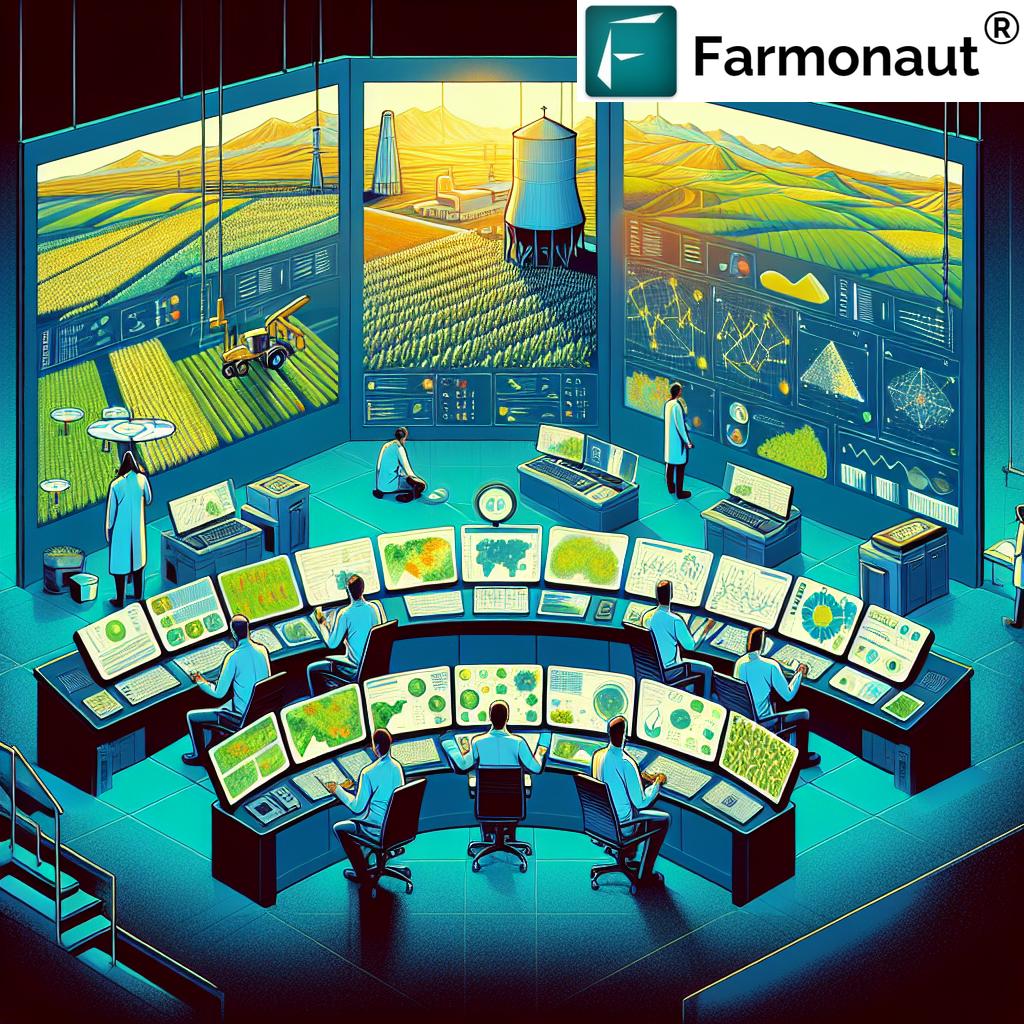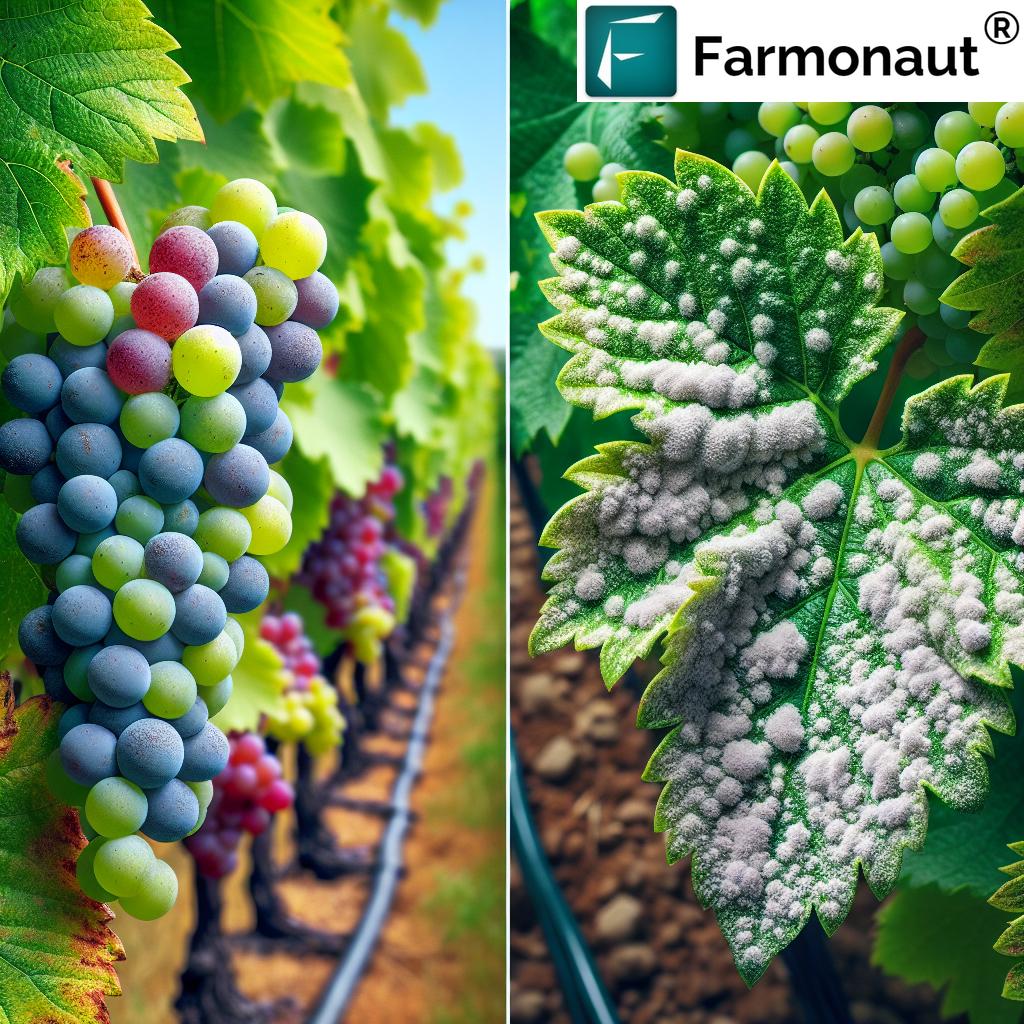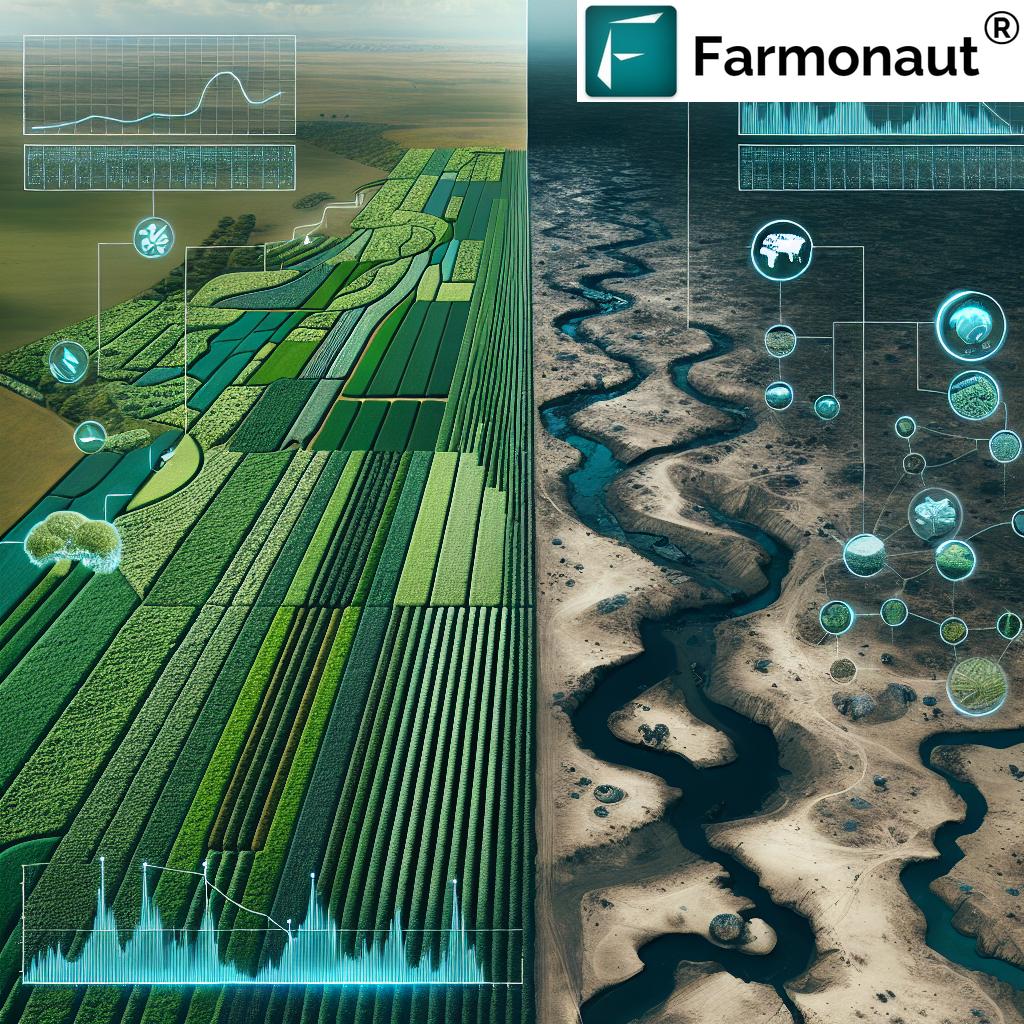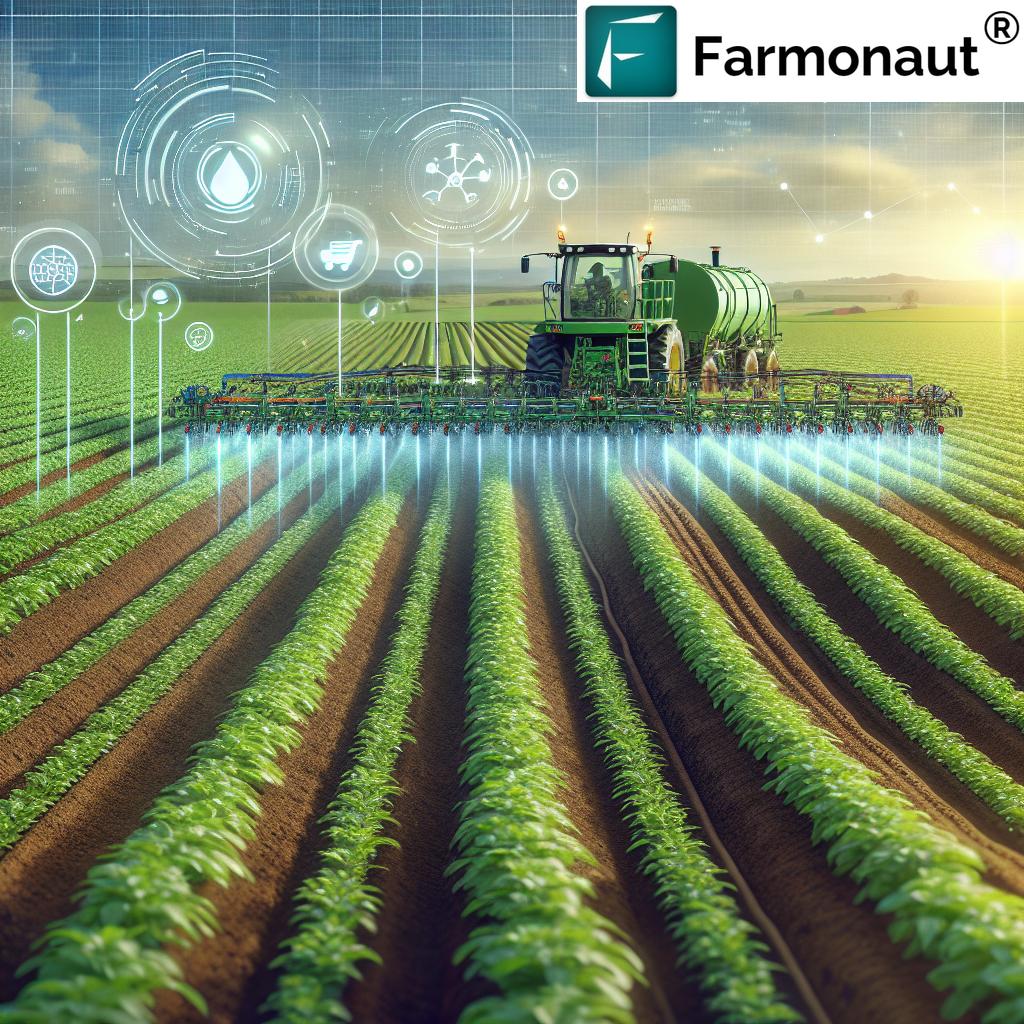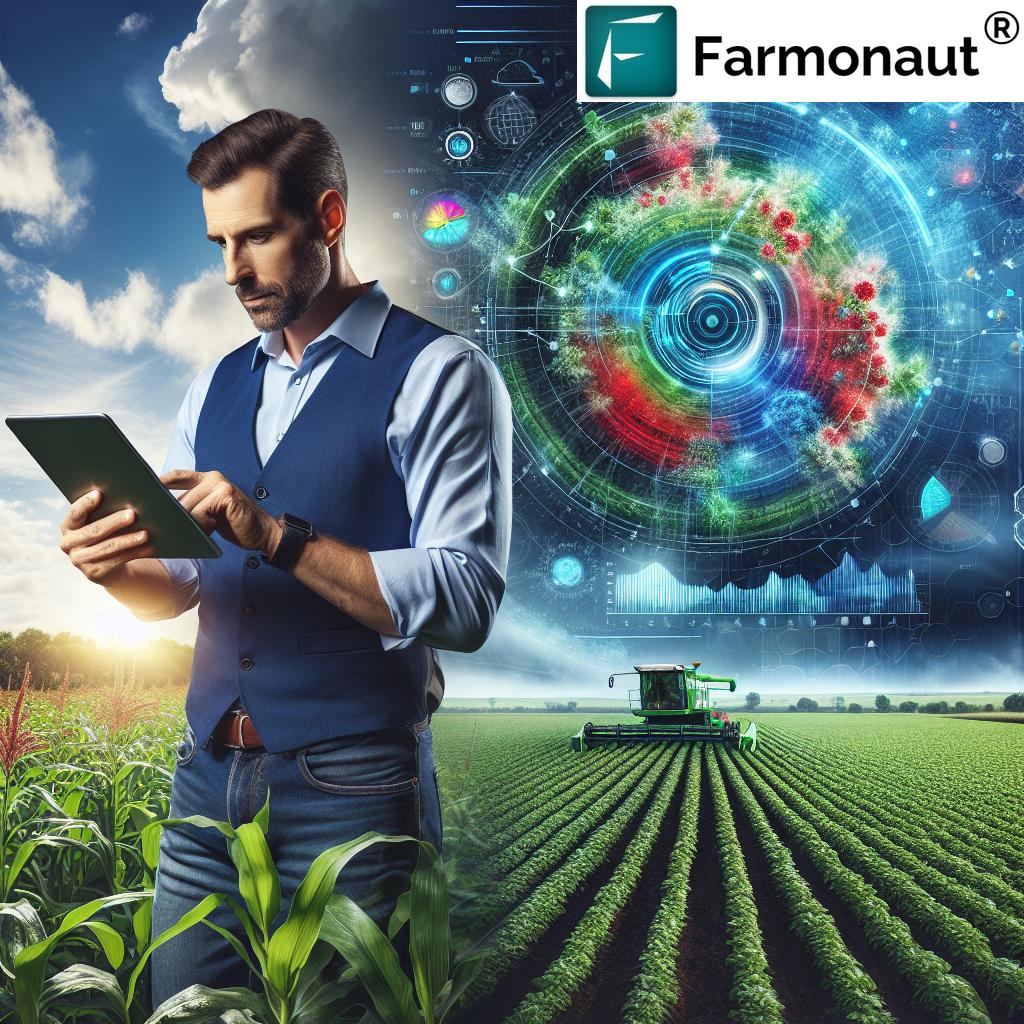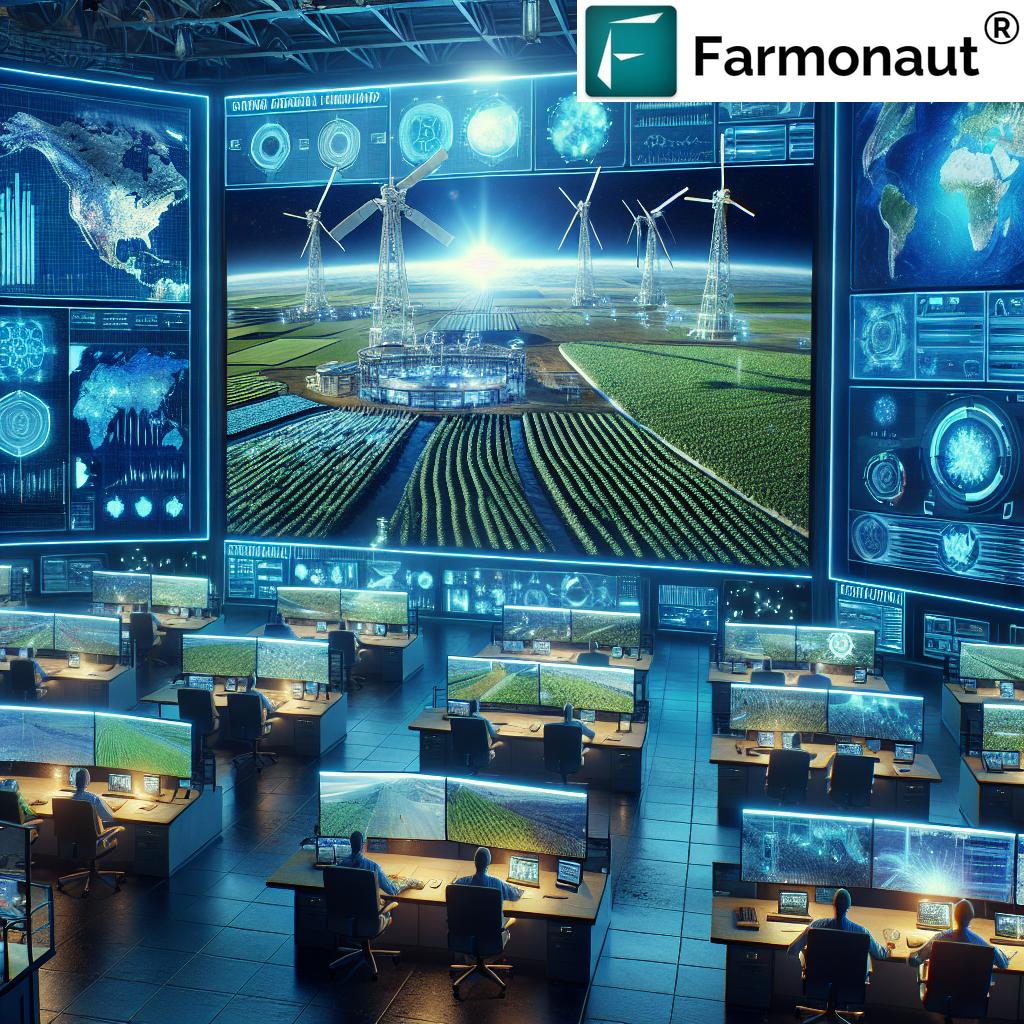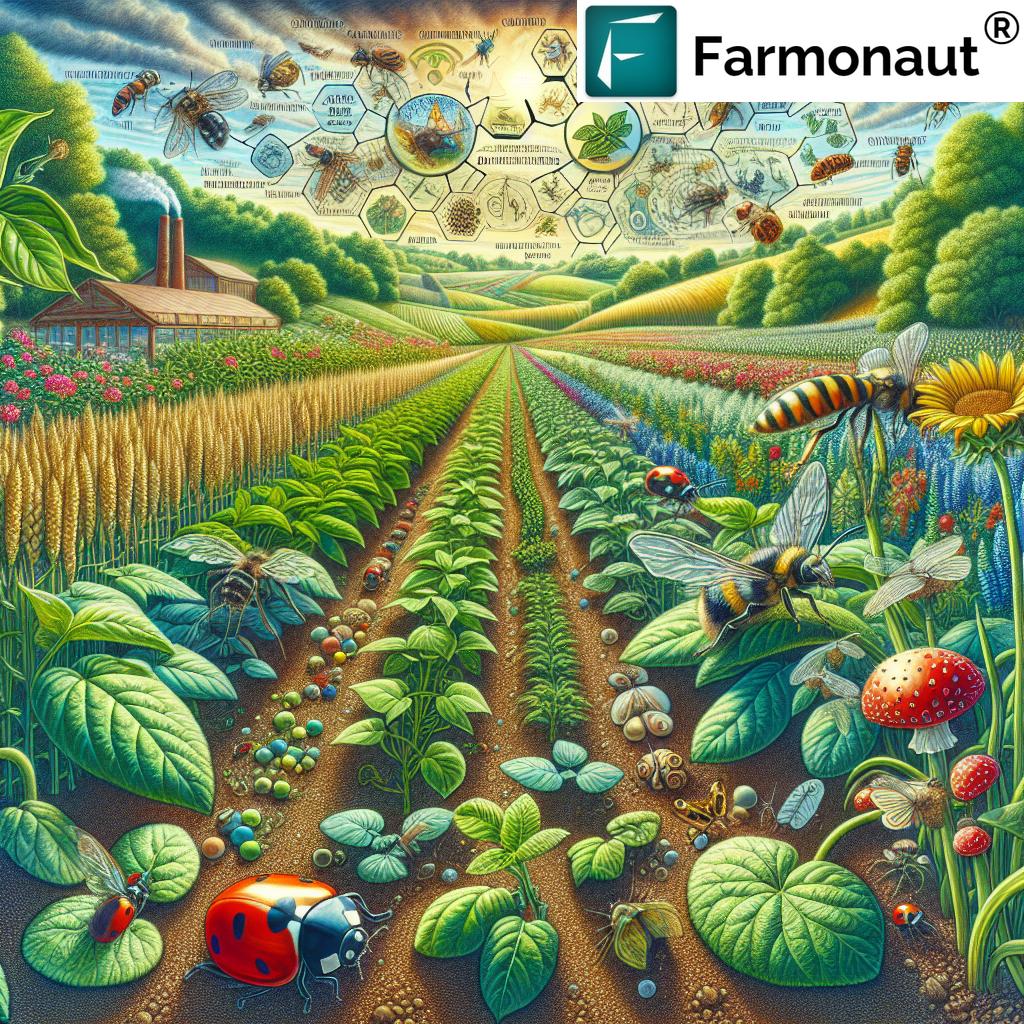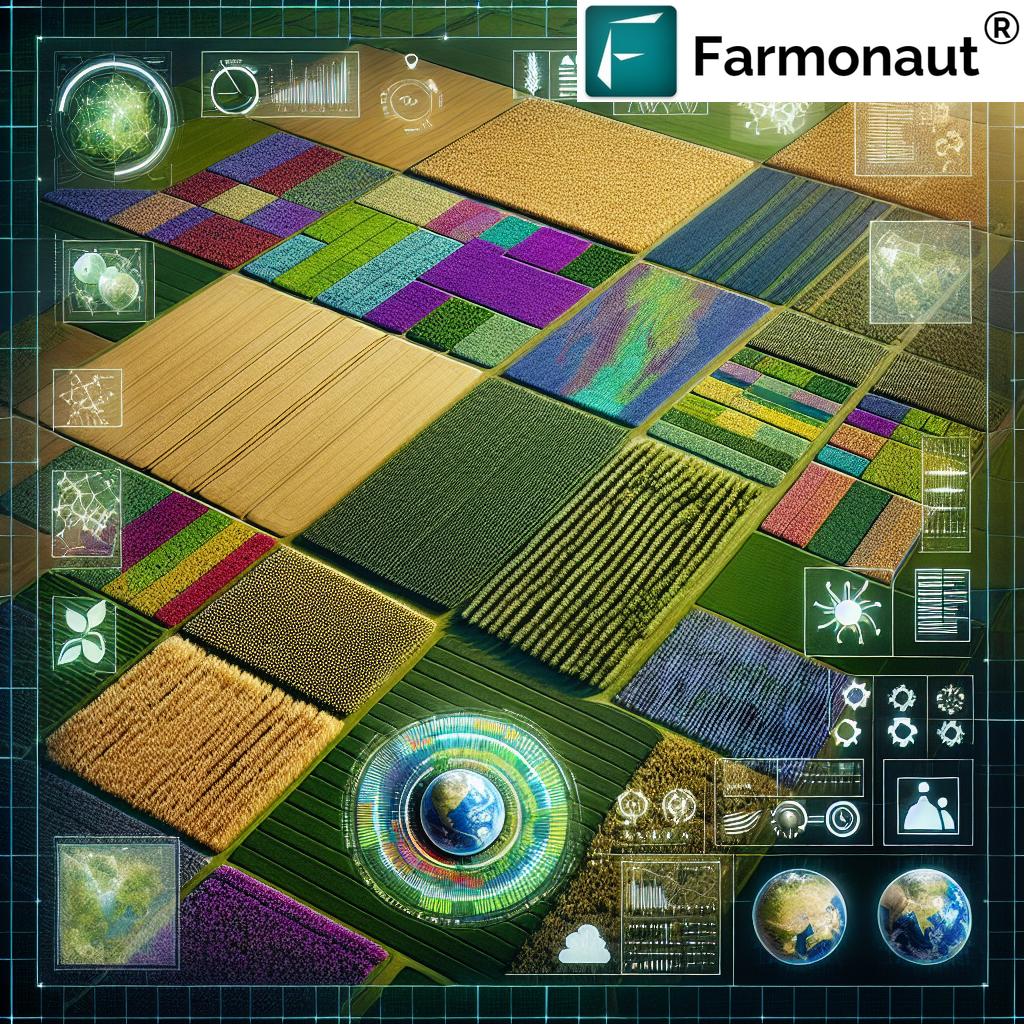Smart Farming Agriculture: 7 Genius Techs Boosting Yields
“Precision agriculture can increase crop yields by up to 20% using data-driven decisions and advanced sensors.”
Introduction: The Revolution of Smart Farming Agriculture
As the world faces mounting pressures from climate change, population growth, and resource constraints, the agricultural industry stands on the brink of a transformative revolution. Smart farming agriculture—often referred to as precision agriculture—leverages powerful technologies like IoT, AI, robotics, and big data analytics to empower farmers in ways previously unimaginable. By integrating real-time data streams with intelligent decision-making, we can optimize crop yields, enhance sustainability, and maximize the productivity of every acre.
In this comprehensive guide, we’ll explore the 7 genius techs shaping the future of agriculture. Discover how farmers, agribusinesses, and governments worldwide are adopting smart farming to solve persistent challenges, achieve higher yields, and ensure food security for generations to come.
What is Smart Farming Agriculture? (Precision Agriculture Defined)
Smart farming, or precision agriculture, is a forward-thinking approach where technology meets tradition. By harnessing digital tools—from sensors to satellite imagery—we can:
- Collect real-time data on every aspect of the farm, including soil moisture, temperature, humidity, and crop health
- Analyze this data to inform decisions about irrigation, fertilization, and pest management
- Optimize the use of resources (water, fertilizers, pesticides) to boost productivity and minimize waste
- Enhance the overall efficiency, sustainability, and profitability of farming operations
In essence, smart farming enables us to employ a data-driven approach, allowing farmers to monitor, manage, and make informed choices for every crop and acre in their care.
Let’s dive into the technologies making this possible.
Overview: The 7 Genius Smart Farming Techs Boosting Agricultural Yields
- IoT in Agriculture: Real-time field monitoring and data collection
- Artificial Intelligence & Machine Learning: Data analysis, predictions, and recommendations
- Robotics & Automation: Autonomous machinery and robotic operations
- Drone Technology & Aerial Imaging: Aerial imaging for crop health monitoring and targeted interventions
- Big Data Analytics: Turning collected data into actionable insights
- Blockchain Technology: Supply chain traceability and transparency
- Precision Irrigation Technology: Precise, automated water management for optimized crop growth
Each of these technologies plays a vital role in our smart farming journey. Below, we’ll explore how each innovation is working to transform agriculture and what it means for farmers and food producers worldwide.
1. IoT in Agriculture: Real-Time Crop and Soil Monitoring
The Power of Sensors, Actuators, and Connected Devices
IoT (Internet of Things) in agriculture has reshaped how we approach crop monitoring systems. Fields are now dotted with sensors and actuators—tiny devices that continuously collect data on soil moisture, temperature, humidity, and crop health (source). This wave of real-time monitoring gives us a precise understanding of field conditions at granular levels, enabling informed, on-the-spot decisions.
- Data-Driven Crop Management: Sensors can monitor soil and environmental parameters 24/7, sending alerts when attention is needed.
- Resource Optimization: With access to accurate data, farmers can target irrigation and fertilizers only where needed, reducing excessive use and wastage.
- Enhanced Yields and Sustainability: Optimized resource management leads to higher yields and promotes sustainable agricultural practices.
Farmonaut’s Approach to Smart Monitoring
Using multispectral satellite imagery, the Farmonaut platform offers farmers affordable, scalable crop health monitoring—no additional costly field hardware required. With satellite-based insights on soil moisture, heat stress, and illness detection, Farmonaut empowers both smallholders and large agribusinesses to act quickly for optimum results.
Try the Farmonaut Web and Mobile Apps for Real-Time Monitoring:



2. Artificial Intelligence in Farming & Machine Learning
Transforming Farm Management with Predictive Power
AI and machine learning algorithms are the analytical powerhouses of smart farming agriculture. They analyze the torrents of data coming from field sensors, drones, and satellites to:
- Predict weather patterns, allowing farmers to plan and adapt planting times or take preventive measures for extreme events
- Identify pest infestations and diseases in their early stages for targeted interventions
- Recommend optimal dosages and timing for fertilizers, pesticides, and irrigation, leading to better resource management
Farmonaut’s Jeevn AI Advisory—Personalized, Actionable Intelligence
Farmonaut’s Jeevn AI Advisory System transforms raw satellite data and farm-level records into expert guidance and real-time insights right on your device. Receive personalized crop management advice, weather forecasts, and action recommendations—all backed by years of precision agricultural technology research and machine learning. Explore how this works in practice by downloading the Farmonaut app.
3. Robotics and Automation in Smart Farming
Autonomous Machinery, Labor Efficiency, and Reduced Costs
The arrival of robotic harvesters, self-driving tractors, and automated weeding systems is redefining manual labor in agriculture. Companies worldwide have developed machines capable of performing repetitive or strenuous tasks with extreme efficiency while reducing overall labor costs and the need for chemical inputs.
- Autonomous tractors and implements traverse fields, planting, spraying, and harvesting with GPS-guided accuracy and minimal human intervention.
- FarmWise’s automated weeding robots (see Wikipedia) use AI and machine vision to distinguish crops from weeds, enabling herbicide-free weed control and protecting crop health.
- Robot-assisted fruit picking, milking, and sorting increase throughput and reduce yield losses associated with labor shortages.
Fleet Management Benefits: Our Farmonaut Fleet Management Tools let large and medium farms track, deploy, and optimize agricultural machinery for even greater efficiency and cost savings.
Automation isn’t just about reducing human input. It’s about leveraging robotics to enhance sustainability, precision, and productivity in every field.
4. Drone Technology in Farming & Aerial Imaging
Eyes in the Sky for Early Detection and Targeted Action
Drones equipped with advanced imaging systems are now essential tools for crop monitoring, field mapping, and precision application of fertilizers and pesticides. Their aerial perspective offers a holistic view—allowing for timely detection of issues like nutrient deficiencies, irrigation problems, or pest outbreaks.
- Aerial Mapping: Create detailed, high-resolution maps of fields to analyze crop health variations, saving time compared to manual scouting.
- Precision Spraying: Deliver crop inputs precisely where needed, minimizing input costs, environmental impact, and chemical overuse.
- Data Integration: Combine drone-acquired imagery with satellite data and on-ground observations for comprehensive analytics.
Farmonaut’s Take: Scale from Fields to Farms Using Satellites
While drones are unmatched for small-scale, frequent monitoring, Farmonaut’s satellite-based crop health monitoring brings affordable, large-scale aerial imaging to everyone—from smallholders in India to vast plantations in Africa. It’s the effortless path to implementing crop monitoring systems that deliver actionable, precise insights without heavy investments.
5. Big Data Analytics in Agriculture
Turning Data into Decisions: Predictive Modeling and Improved Efficiency
The digital age has unleashed a wealth of data—from IoT devices, machine logs, satellite imagery, market trends, and even consumer behavior. Here, big data analytics in agriculture plays an essential role:
- Aggregates heterogeneous data sources for a unified farm management view
- Performs trend analysis to predict crop demand, optimize supply chains, and inform planting decisions
- Runs predictive models for risk mitigation—like identifying disease risks or extreme weather events
Example: With Farmonaut’s API, any agribusiness can integrate real-time, satellite-powered insights directly into their platforms, enabling decision makers to act swiftly.
Want to build your custom agricultural app? See our powerful API Developer Documentation.
6. Blockchain Technology: Ensuring Traceability & Food Safety
Building Trust with Immutability and Transparency
The agricultural supply chain is complex, crossing numerous hands and continents before food reaches our plates. Blockchain technology creates an immutable, transparent ledger for every product transaction or journey phase, enabling:
- Instant, verifiable tracing of a product’s origin and entire journey
- Enhanced food safety and compliant supply chains by allowing quick recalls or audits if contaminated products are detected
- Increased consumer confidence and reduction in fraud
Farmonaut’s Traceability Tools in Action
With Farmonaut’s blockchain-based traceability solutions, organizations across food and textile sectors ensure that every claim—organic, ethically-sourced, or origin-certified—is supported by secure, digital records. This transparency supports international compliance and improves the reputation of agricultural brands.
7. Precision Irrigation Technology
Smart Water Usage for Healthier Crops
Precision irrigation technology utilizes sensors to monitor soil moisture and crop water needs in real-time. These innovations automate when, where, and how much water is delivered, enabling:
- Optimal hydration, preventing over- or under-watering
- Significant water use reduction—up to 30% (source), conserving this vital resource for both the farm and the environment
- Stabilized and increased yields due to uniform plant stress reduction
Farmonaut’s Resource Management & Satellite-Driven Irrigation
By leveraging satellite-driven soil moisture maps and resource management dashboards, Farmonaut gives growers precise irrigation and fertilizer guidance—no manual sensor installation required. Functionality is available through web, iOS, and Android apps, making it suitable for both large-scale plantations and smallholder farmers.
“Smart irrigation systems can reduce water usage in farming by as much as 30% through real-time monitoring and automation.”
Comparison Table of Smart Farming Technologies
| Technology Name | Primary Function | Estimated Yield Increase (%) | Efficiency Boost (%) | Environmental Impact | Ease of Adoption | Example Applications |
|---|---|---|---|---|---|---|
| IoT in Agriculture | Real-time monitoring via sensors & actuators | 8–15% | 10–20% | High (less waste) | Moderate | Soil/crop health monitoring, disease alerts |
| AI & Machine Learning | Predictive analytics, advisories, automating decisions | 10–18% | 15–25% | Medium | Advanced | Weather prediction, pest/disease alerts |
| Robotics & Automation | Autonomous tractors, robotic harvesting, weeding | 12–20% | 20–35% | Medium | Advanced | Self-driving equipment, automated weeding |
| Drones & Aerial Imaging | Aerial crop monitoring & targeted spraying | 8–14% | 12–20% | High | Moderate | Field imaging, pesticide/fertilizer spraying |
| Big Data Analytics | Aggregated data analysis, predictive models | 10–19% | 18–27% | Medium | Advanced | Yield prediction, supply chain planning |
| Blockchain | Supply chain traceability & transparency | 2–5% | 6–12% | High | Moderate | Product origin tracking, compliance |
| Precision Irrigation Technology | Smart, automated water delivery to crops | 9–17% | 15–28% | High | Easy-Moderate | Drip, sprinkler, satellite-guided irrigation |
Farmonaut: Satellite-Powered Precision Agriculture Solutions
Farmonaut is at the forefront of the smart farming movement, offering affordable, advanced, and satellite-based farm management tools for farmers, agribusinesses, and government agencies worldwide. Here’s what sets Farmonaut apart in delivering the promise of precision agriculture:
- Satellite-Based Crop Health Monitoring: Get real-time data on vegetation health (NDVI), soil moisture, and potential stress, all from the sky. No extra hardware is needed—helping reduce high initial costs for smallholders.
- Jeevn AI Advisory System: Receive AI-powered recommendations and weather insights tailored to your farm. Learn more.
- Blockchain-Based Traceability: Use traceability tools to build transparency into your supply chain, win customer trust, and meet global compliance requirements.
- Fleet & Resource Management: Manage large fleets for plantation logistics, improve machinery efficiency, reduce downtime, and cut operational expenditure.
- Carbon Footprinting: Track and reduce your environmental impacts for regulatory compliance and brand value enhancements.
- Crop Loan and Insurance Verification: Access credit and insurance faster with satellite-based field verifications, mitigating fraud risks and ensuring fair access for farmers.
- Scalable Cloud Platform: Use Farmonaut via Android, iOS, browser, or API—making precision farming accessible anywhere, anytime.
No matter the size of your operation, Farmonaut ensures you access best-in-class agri-insights without the prohibitive costs of traditional precision agriculture.
Applications of Smart Farming in Modern Agriculture
Smart farming agriculture applications are diverse, ranging from precision crop management to data-driven livestock care:
- Precision Irrigation: Automated irrigation systems adjust water delivery based on soil moisture and weather data, optimizing every drop.
- Crop Monitoring & Management: Drones, satellites, and on-ground sensors enable early detection of nutrient deficiencies, disease, or pest infestations, allowing preventative actions and safeguarding yields.
- Smart Greenhouses: Integrated sensors and automated systems manage temperature, humidity, CO2, and light for optimal growth—facilitating year-round food production.
- Precision Livestock Farming: Wearables and monitoring systems track livestock health, feeding, and movement for improved animal welfare and farm profitability.
- Resource & Plantation Management: Farmonaut’s large-scale management tools streamline everything from crop advisories to logistics for plantations, cooperatives, and governments, multiplying scalability and efficiency.
See how Farmonaut supports every stage of crop plantation and forest advisory: Learn more.
Global Perspective: Scaling the Smart Farming Revolution
From India’s adoption of satellite-driven advisories to China’s national digital agriculture plans, the global agricultural industry is embracing data and automation at scale:
- India: Increased yields and profits using space data for weather prediction and resource timing (source).
- China: Ambitious nationwide plan to digitize planting, connect big data platforms, and secure food production (source).
- Global Companies: Roll-outs of autonomous farm equipment (tractors, sprayers) to boost efficiency and address labor shortages (source).
These examples prove that smart farming agriculture is an actionable, proven path forward for feeding the world responsibly.
Key Challenges & Considerations in Smart Farming
While the benefits of smart farming are clear, several important challenges must be addressed if these innovations are to become universal:
- High Initial Costs: Advanced tech can be expensive; affordable, scalable, and satellite-driven solutions lower these barriers for smallholders.
- Data Management: Handling vast data volumes requires robust systems. Security and privacy are vital.
- Skill Requirements: Training and education are essential—farmers must be supported to adopt and use new technologies.
- Ethical & Social Concerns: Automation could cause labor displacement, raising the need for responsible and inclusive tech adoption.
At Farmonaut, we’re committed to democratizing smart farming—making advanced, data-driven agriculture accessible, affordable, and ethical on a global scale.
Future Prospects: What Lies Ahead for Smart Farming Agriculture?
As AI, IoT, and robotics continue to evolve, so too will the field of agricultural technology solutions. We’re on the cusp of a future where:
- Farmers globally can access AI-driven insights for every crop, even via smartphone.
- SLMs (Small Language Models) tailored for agriculture will enable real-time, hyper-local recommendations, support in regional languages, and integration with legacy practices.
- Seamless marketplace traceability will empower consumers and brands to buy and sell food with confidence.
- Precision interventions will minimize environmental footprints while maximizing farm revenue and sustainability (source).
By embracing these technologies, we claim our place in a more sustainable, resilient, and abundant agricultural future.
FAQ: Smart Farming Agriculture
1. What is smart farming agriculture?
Smart farming agriculture, or precision agriculture, is the use of advanced technologies—like IoT sensors, satellite data, AI, and robotics—to optimize every aspect of farm operations, maximize yields, and promote sustainability.
2. How does IoT improve crop yields?
IoT devices gather real-time field data (moisture, weather, crop health), enabling dynamic, informed interventions that address crop needs efficiently and reduce waste—leading to higher, more reliable yields.
3. What is the advantage of AI in agriculture?
Artificial intelligence in farming analyzes vast amounts of field data, predicts risks, and recommends precise actions for planting, irrigation, pest control, and resource use—improving productivity and reducing manual guesswork.
4. How can Farmonaut help smallholder farmers?
Unlike traditional, hardware-heavy precision ag tools, Farmonaut delivers satellite-powered crop monitoring and AI advice via mobile or web at an affordable price, democratizing smart farming for farms of any scale.
5. Is blockchain relevant for food safety?
Yes—blockchain technology offers transparency in supply chains, allowing for accurate traceability of crops and food products, which ensures food safety and compliance.
6. What steps should I take to implement smart farming?
Start by registering on a platform like Farmonaut, assessing your field with satellite data, and adopting targeted resource management practices. Gradually scale up by integrating AI advisories and adding traceability if needed.
Get Started with Farmonaut’s Smart Farming Platform
The future of smart farming agriculture is within reach—are you ready to transform your farm, plantation, or business?
- Access farm management, resource optimization, and real-time crop monitoring today. Try Farmonaut’s Web and App platform.
- Enhance your supply chain with blockchain-based traceability. Visit: Product Traceability
- Track and reduce your farm’s carbon output. Visit: Carbon Footprinting
- Need large-scale farm management? See: Agro Admin App
Let’s embrace smart farming, improve yields, protect our resources, and build a resilient, sustainable future—together.



